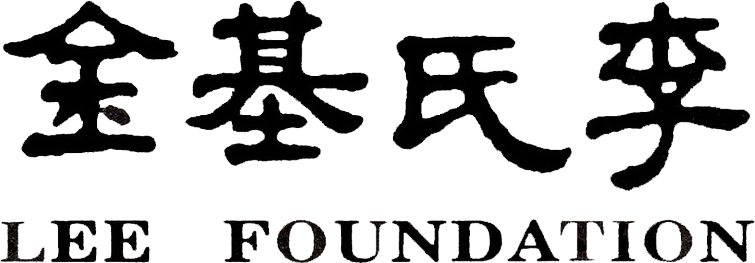A Book of Productions
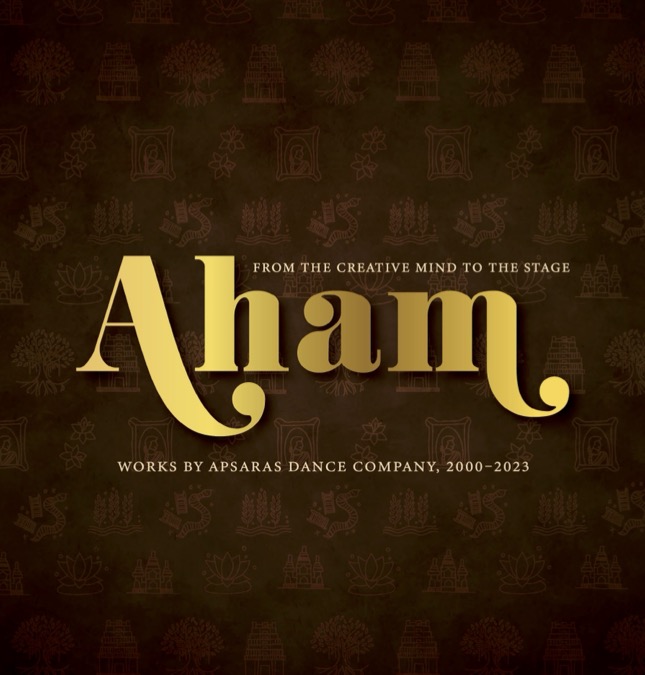
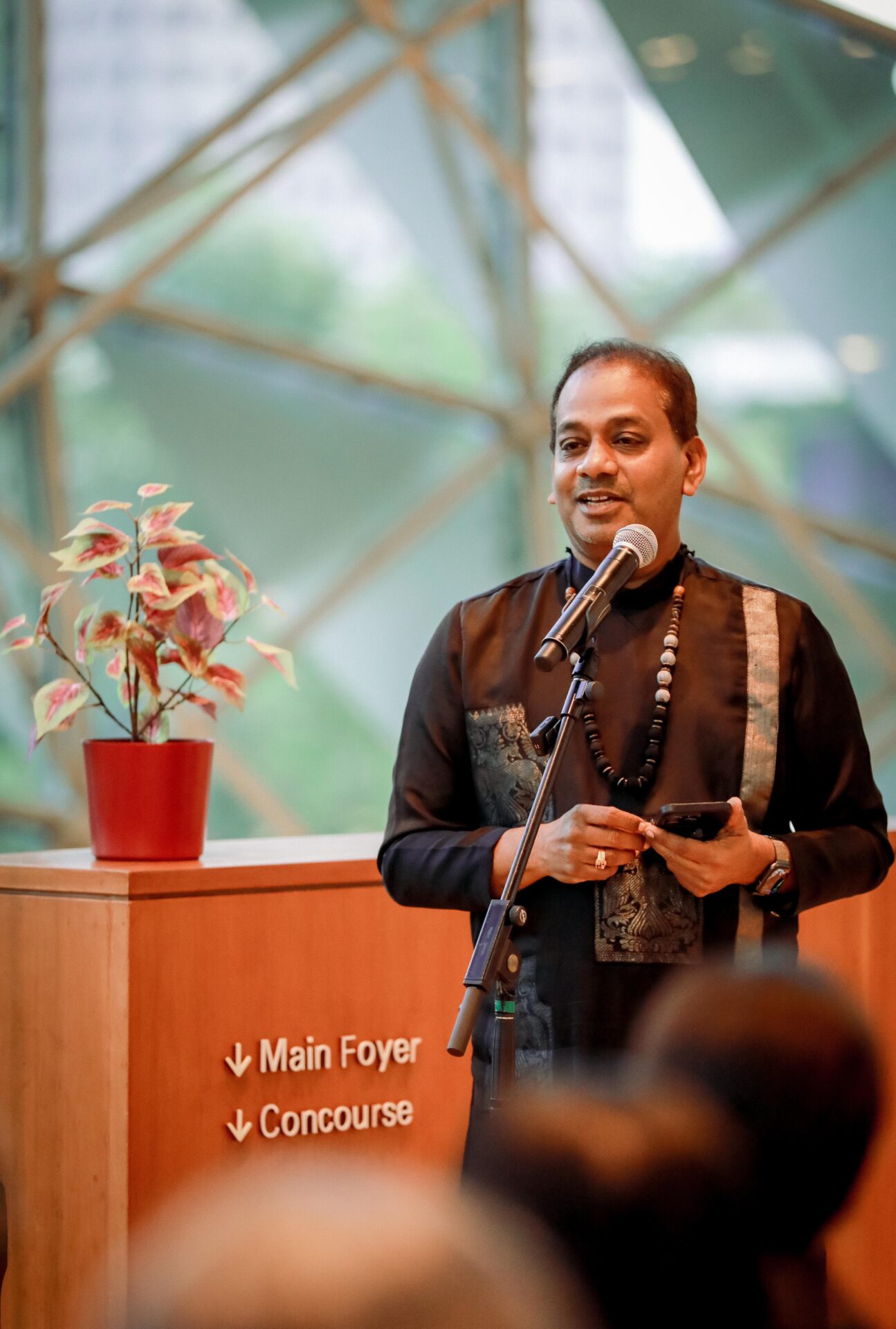
You see, typically in the context of a dance production, what people see on stage is 60 or 90 minutes of work but it takes months and years to bring works of this scale alive on stage. This apart, the information that we collect during our research leading up to the production is both extensive and in-depth and not all of it makes it to stagecraft.
As a result, there is a lot of information in the book that is useful and interesting for people that will not only offer them perspectives on the work but also on the many interesting pieces of facts and trivia that we, as artistic directors, visualisers and choreographers, researchers, discover along the way.
The idea for Aham was born when we began thinking of ways in which we could document the work that goes behind each of our productions at Apsaras Arts.
Aham also contains research about the poets, lyrics, the literature from which we choose to create our work; aspects and history of the costume and how we design it; a background on the textiles that are used for the costumes; the music, its composition… You get the drift, right?
Basically, it is an in-depth documentation of the work-in-process that goes into creating every production. The book also includes people’s reactions and response to each of our works and hence the book also features interesting quotes from reviews in the press, quotes from scholars and other experts in the field who have witnessed our work.
By virtue of writing this book, you also had the opportunity to go back in time and re-visit your past works, right? What were your learnings? It is one thing to create ensemble productions and quite another to chronicle their stories; tell us more?
When I started re-visiting the works of Apsaras Arts, I decided to stack them chronologically from 2000 to 2023. What I realised as I did that was how our productions have really evolved over time.
I can see how we have benefited by introducing dramaturgy in our work; I have learnt to appreciate how collaborations have helped us and how the involvement of a few international artistes who have participated in our work has helped propel the work both in terms of choreography and concept.
It was also heart-warming for me to see that some of our works, almost ten of them, have also travelled widely, and those that have, have also evolved along the way.
What was the writing process like?
I have to confess that I now have a huge sense of respect for people who write books; I rely a lot on books for my research but my respect for writers has increased manifold after I turned author because honestly, it isn’t easy.
I think I must give credit to my editor, who was painful but particular about the questions she was constantly asking me because it ensured the book is squeaky clean and relevant to the reader; particularly to a reader who is not from this industry. That was the whole purpose.
I was also conscious that the book would not be limited to someone who is trained in Bharatanatyam and who understands all the jargons that we tend to use. I wanted for the book, like our productions, to travel widely. The book is also useful for people in the industry – choreographers, lighting designers, music composers, et al but also I think it would also interest people who study history, monuments, architecture, culture, heritage and anthropology.
The core of the productions featured in the book are all rooted in the traditional repertoire and yet in a sense, they have a quality of the contemporary; there are works that have been inspired by architecture, art, sculpture and some that are at the intersection of them all. Please tell us a bit about the diverse nature of the book from a content perspective.
The diverse nature of the productions makes the book diverse.
The book begins with Alam, a production about a banyan tree which talks about the evolution of Bharatanatyam and the last chapter of the book is Arisi:Rice, our most recent production, and if you look at it, the two works are very far and different from each other.
There are productions that are inspired by architecture like Nirmanika and Anyasa. Angkor is not really about architecture but it is the story of how two civilizations, India and Cambodia got together in ancient times and the way this monument came about.
Then there is Agathi, which talks about refugees, a very contemporary idea, pertinent to today’s world. Anjaneyam and Arisi talk about the cultural collaboration between India and Southeast Asia. There’s something in every production which is worth showing.
All the productions have a quality of scale about them. For example, Anjaneyam and Arisi are mammoth productions; Agathi is based on a universal theme. In the context of writing, how did you distill that scale?
Our repertoire productions are small, medium and large in terms of the size of the cast/ artistes, the creative team, etc. The team of Arisi and Anjaneyam is large. Agathi and Nirmanika are medium-sized productions. Then there’s Parama Padam which is minimalist or small.
But then, I discovered that the process in which they were made and the research that one needs to do are not very different. Parama Padam, even though minimalist in terms of cast and the creative team, took its own course to find form and shape.
In fact, I’d say for works that are smaller in size, the effort is usually larger as we need to distill what we really want to showcase. Then again, when you look at the scale of Arisi: Rice, it brings with it its own complexities. We have so much to say; there are so many dancers on stage and how does one say it all in 90 minutes.
But we realised is that we love the art of editing. And that is what makes all the difference.
Simple, Strong, Story

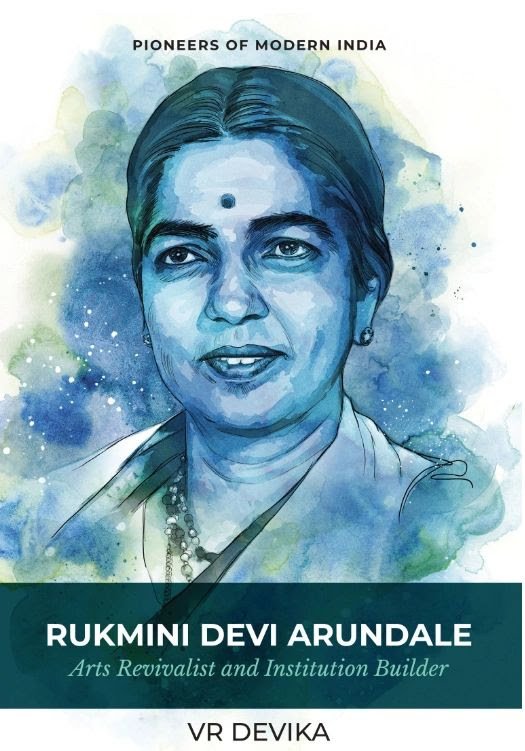
In conversation with V R Devika, cultural activist and writer, V R Devika on her recent book that tells the story of Rukmini Devi Arundale, in short
Why Rukmini Devi Arundale; what is your fascination with her and the Kalakshetra?
The first cultural institution I went to after migrating to Madras from Mysore in 1974 was Kalakshetra. I was fascinated with the ambience, the training and the aesthetics at Kalakshetra.
I had written a book on Dr Muthulakshmi Reddy who worked on the ban on the dedication of young girls as Devadasis. Rukmini Devi Arundale had to follow naturally.
Why is her story worth being told? Personally for you, why is telling her story important?
Her story is worth being told because a woman with privileged birth and picked for being in fortuitous circumstances could have easily enjoyed the comforts of being the wife of the International President of the Theosophical Society and travelled the world with her husband and got great compliments on her looks.
Instead, she strove to bring out the dance in all its glory in a totally different way. Everything she did was original. This apart, the North American and European dance history scholarship had come out with a narrative that is totally unrelated to reality smelling a conspiracy where there was none, to denigrate Dr Muthulakshmi Reddy and Rukmini Devi. So I decided to tell her story to counter that narrative.
What is it like for you, as a woman, to write about these strong women?
For me, these two women are big inspirations. They thought in opposite ways about the dance. Rukmini Devi created such an impact on not just dance but also on women’s rights, education, cancer treatment, textile, theatre design, lighting, nature, animal welfare, printing and many more. How can a woman accomplish so much in one life?
In terms of writing style, how different is the voice and tone of your writing – Muthulakshmi Reddy vs Rukmini Dev?i
I was very sure about making it simple and telling the story directly. Not much was known about Muthulakshmi Reddy’s childhood, So I filled the early years with history and sites of Pudukkottai, setting her early life in Pudukkottai and its fascinating history. I also researched women doctors around the world and brought them into the narrative. In terms of research, the book on Dr Muthulakshmi Reddy was very intense.
Writing Rukmini Devi Arundale was relatively easy. Her life is much more documented and she was younger than Dr Muthulakshmi Reddy. I wanted to keep the same flow and writing style in keeping with the format of the Pioneers of Modern India series of the publisher, Niyogi Books.
The book is so full of fascinating stories and anecdotes; talk to us a little about the research that went into this book?
I am so happy that the Theosophical Society has digitized most of its publications. I was very happy to read the writings of George Arundale, Annie Besant and others. Rukmini’s own writing is so sophisticated even though she did not finish schooling. I rushed through the book to be able to finish it in time to release it on February 29, this year, coinciding with her 120th birth anniversary that too on a leap year.
Leela Samson has already written a book on Rukmini Devi; did you consciously try to bring in another element to Rukmini’s personality through your writing?
Leela Samson’s book is a thoroughly researched book and quite serious. I needed to make my book simple. I see this book as a supplement to Leela Samson’s book. My approach is completely different; it is simpler and smaller and is meant to reach even those who don’t read much.
Noteworthy
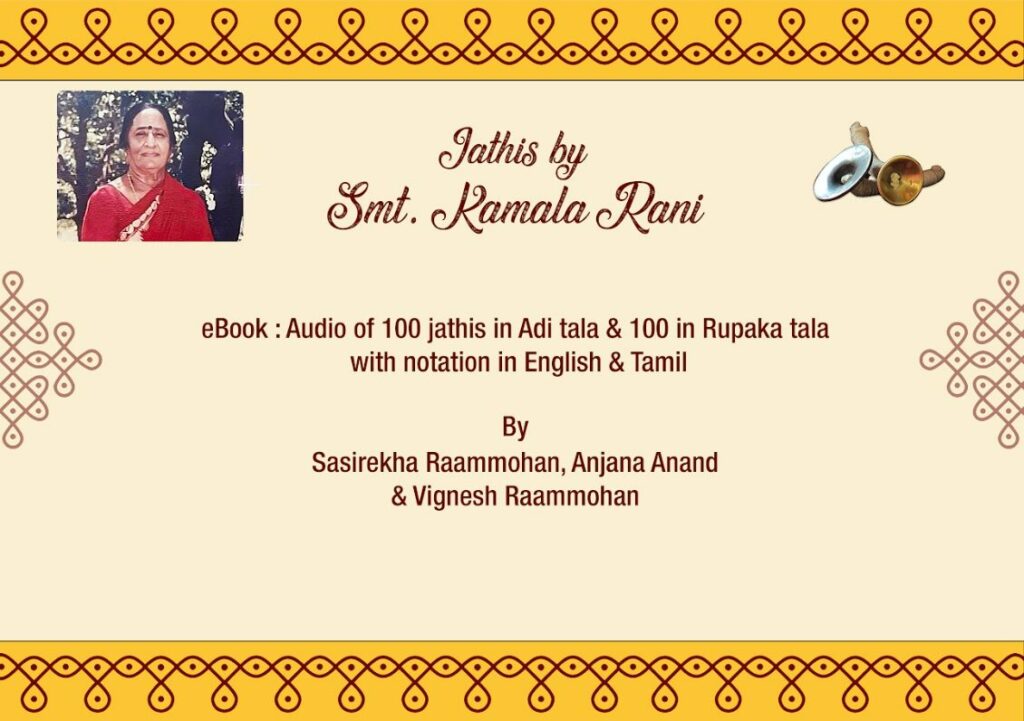
Dancers, choreographers and researchers, Dr Anjana Anand and Sasirekha Rammohan put the spotlight on Kamala Rani, a musician and credited to be the first female Nattuvanar of Kalakshetra, through their e-book that documents her jathis
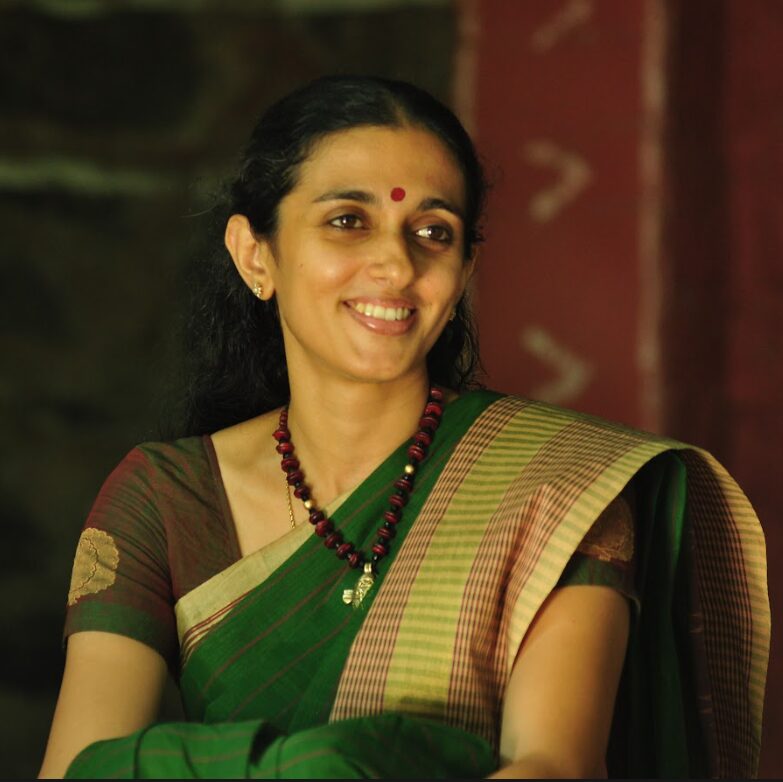
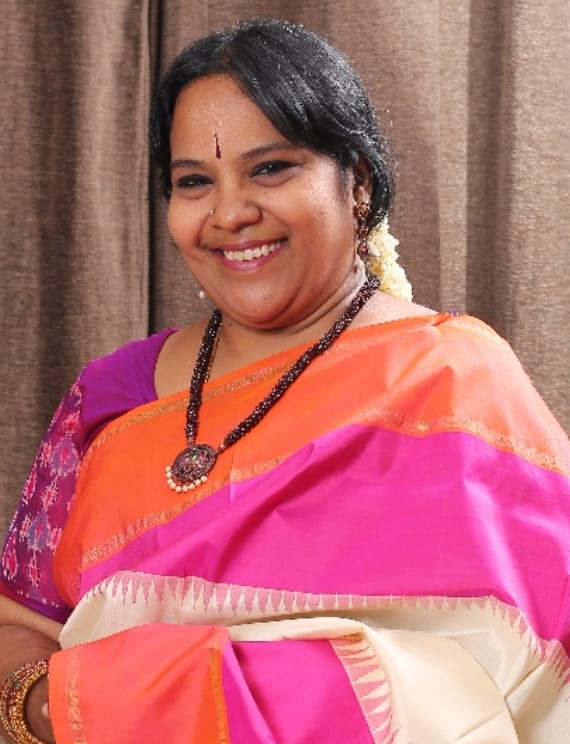
What, when, where and how did the idea of this book occur?
The idea of the book happened during the pandemic when Sasi (Sasirekha Rammohan) found the old published books of jathis published by Kamala Rani Teacher in the 90’s. Since the notations were not clear and she knew that I had studied with Kamala Rani Teacher, we started deciphering all the 200 jathis meeting over Zoom, everyday. What started just as a way to use time during the lockdown usefully turned out to be material for an e-book.
Why do you believe Kamala Rani’s work needs to be documented?
Going by the standards of today’s Instagram-obsessed world, Kamala Rani would have been quite a star! The first woman Nattuvanar mentored in Kalakshetra, from a non-hereditary family to wield the cymbals, and sing for Kalakshetra dramas for four decades and more… What a fiery spirit she had!
Not only did she perform but also she framed a methodology for teaching nattuvangam to scores of up and coming dancers in Chennai and abroad. Her exposure to nattuvangam was influenced by the early Nattuvanars who were in Kalakshetra like Meenakshi Sundaram Pillai, Chokkalingam Pillai, Dhandyudapani Pillai, to name a few. She imbibed their musicality and the use of traditional sollukattus used for Bharatanatyam. From this corpus, she composed her own jathis keeping the beauty of their work alive.
What were some of your learnings while attempting to document this work?
Notating 200 jathis in the Carnatic format was easier said than done. We had to first make sure that the jathis were being recited correctly. Next came the job of notating it accurately. Since we wanted to make it available in both Tamil and English, we had to cross-check our work several times. The best decision was to record the jathis so that those wishing to use the jathis would have an idea of the way it should be recited.
Can you give us some inroads into the structure and flow of this e-book and who will find it especially useful?
We have provided notations of 100 Adi Tala Jathis and 100 Rupaka tala jathis that Kamala Rani composed in her lifetime. The e-book comes along with professionally recorded audio of all the jathis. This book will be very useful for Bharatanatyam performers and teachers who want to use these jathis in their own solo or group choreography.
Besides, the e-book is also an archive in the history of nattuvangam. The sollukattus (spoken rhythmic syllables) used for Bharatanatyam now have evolved over time to include mridangam and other percussive sollus. The earlier sollukattus were designed specially for natyam. It is important to document this evolution.
As researchers yourself, do you believe the dance landscape is rich with ongoing research; your word of advice for young researchers?
To answer the first part of your question, I’d say, absolutely! Young students today are curious to know how this heritage has evolved. There is a lot more interest in documentation and looking back in time. My only advice is that we do not fall into the trap of looking at history through just one lens and making it a linear story. What we are able to access, read and see into the past is also limited by the availability of material and the sources that we find. It is important to keep an open mind as a researcher and keep the current practice of art forms alive so that research does not become mere theory and jargon. At the end of the day, it must enrich our understanding and contribute to making art richer in the years to come.




